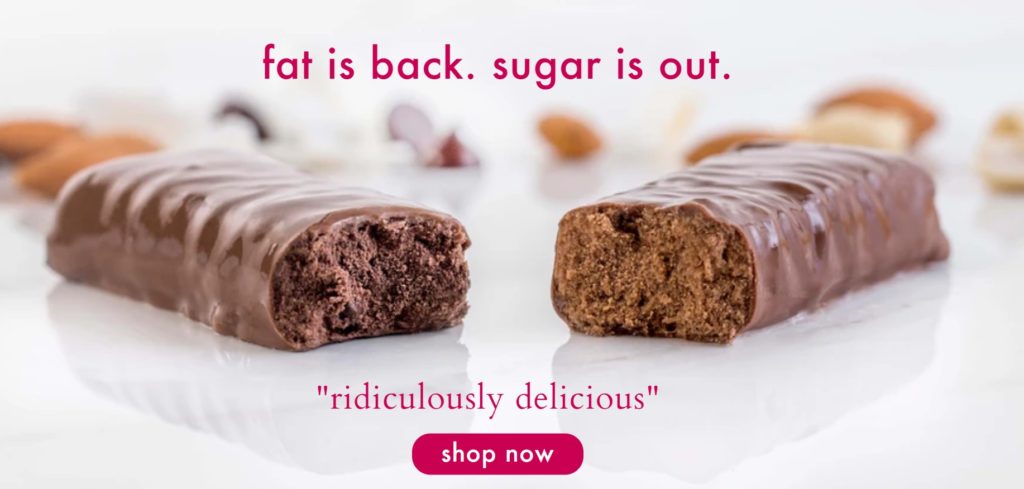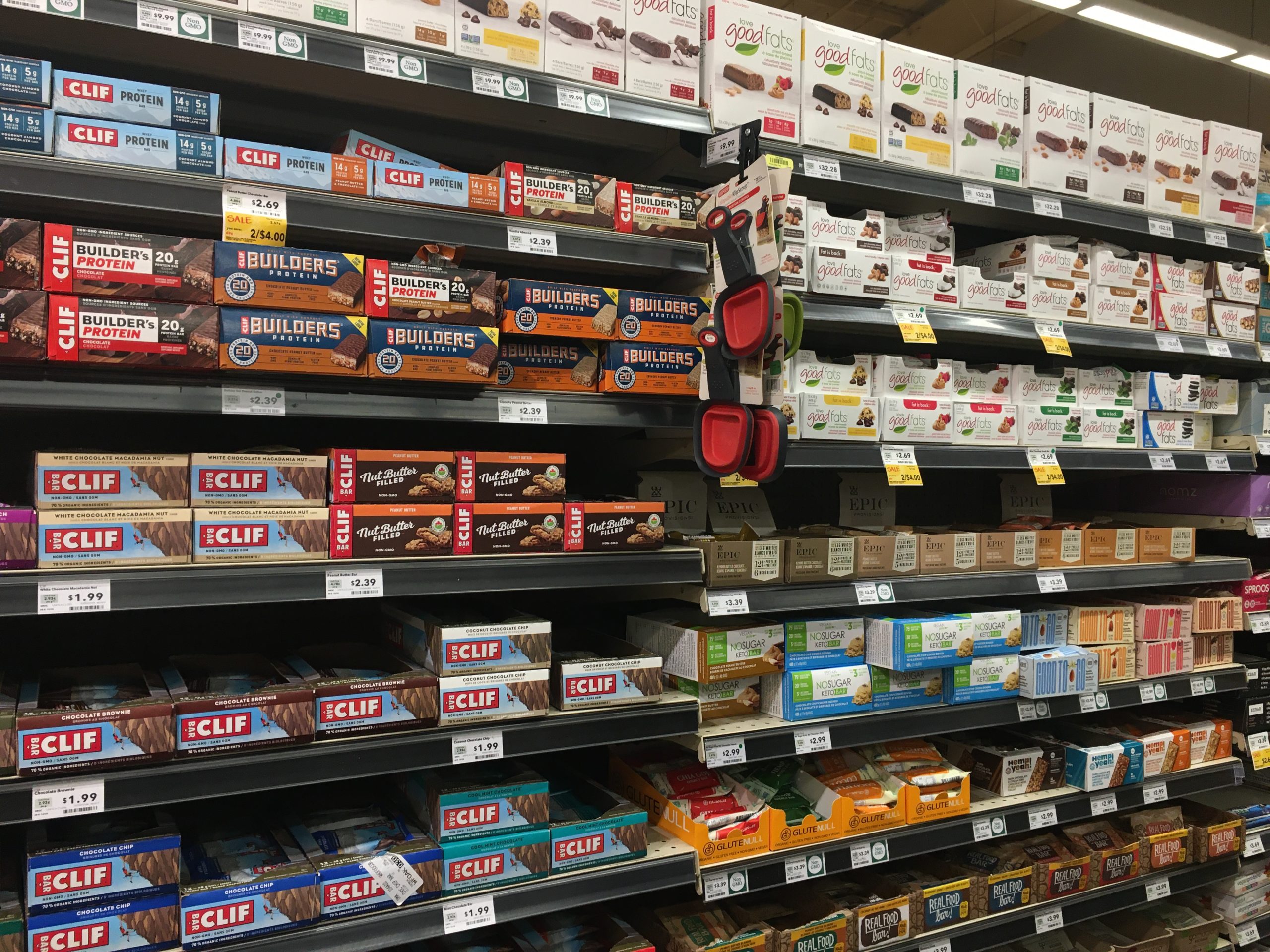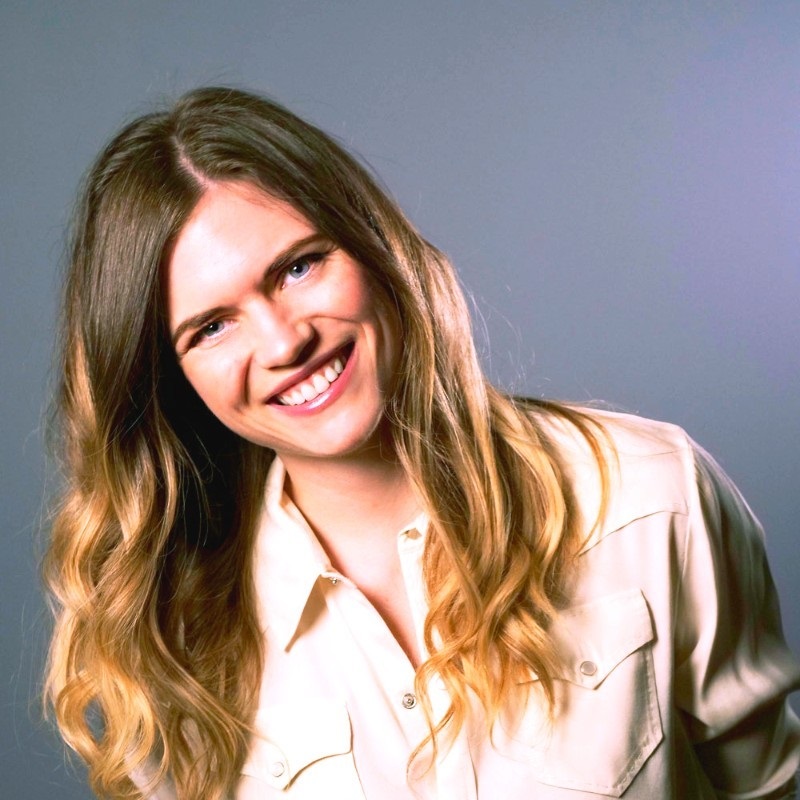
When clients hire copywriters, they’re looking for marketing assets. For website content, ads, emails, brochures, packaging copy…
What it turns out they often need is positioning first.
You need the most compelling answer to the question, “Why should your customer choose you over every other brand?”
The best expert I know on this topic is Suzie Yorke, founder of the award-winning, shelf-dominating startup brand, Love Good Fats. Suzie led Love Good Fats from zero to hypergrowth and $100mil in revenues in 3 years… in the tiny market of Canada alone.
Suzie is a winner of the 2019 Canada’s Most Powerful Women: Top 100 Awards (Entrepreneurship) and has led marketing for some of the most well-known consumer brands in North America.
I was lucky to work with Suzie years ago on a client project. She was brought in when a beloved, market-leading brand was losing share to challengers with weaker products.
At the core of the challenge? The brand’s positioning.
And here’s what is so interesting for those of us devoted to voice-of-customer:
Suzie excavated the brand positioning from customer insights.
This kind of positioning work is based on deep research. The kind of research that uncovers Big Ideas and gives brands the edge for decades.
Where Suzie comes from — the marketing departments of top-tier consumer packaged goods brands — there’s a proven positioning process.
And it also works for smaller brands. We found that using Suzie’s process to create brand messaging immediately increased our client’s e-commerce sales by 600% in the first year.
And so, when I wanted to dive deeper into the topic of brand positioning, I knew I needed to speak to Suzie again.

Suzie Yorke on the smart startup’s approach to positioning
Anna:
In my experience, most small companies are marketing without first having defined positioning. What do you think is going on there?
Suzie:
Well, in the last three years, I’ve spent a lot more time connecting, engaging, and interacting with many, many smaller startups than ever in my career before.
It’s just they don’t have the benefit of years spent learning to build the brand, which is what a lot of the larger consumer packaged goods companies teach.
And they may not have access to consultants or marketers or employees who have that experience either, so it comes down to a very similar story:
- There’s a founder who has an unmet personal need or experience that leads to a product insight.
- The founder’s response is, “Let me try to solve that problem by coming up with this product.”
- Often, they start with a product first and then create positioning.
Versus what I’ve done, which is a similar process.
- I read a book and discovered a compelling insight (a problem of misinformation in the market).
- My first step was to write down the positioning. (So the concept, the messaging.)
- Then, I created a product to deliver on that positioning.
But for many, many, many entrepreneurs and the majority of startups, it starts with the product idea.
‘I really wish there was a wheat-free pasta,’ for example. ‘A product that would let me enjoy pasta even with my allergies to wheat.’
So, they decide they want to come up with a wheat-free pasta and they work on the product.
Entrepreneurs start with ideas based on a need, a problem, and they jump to the product right away. And that’s the right thing to do because you first have to get a product.
But you also have to back up and say, ‘If I want to make a big brand out of this and grow a company, what’s really key is the positioning.’
What you need are to get these four pieces right:
- Product
- Positioning
- Price/value equation
- Awareness and trial
And you need all four to go from an idea to a sustainable brand that makes your revenue and profit target.
How positioning informs creative — from copywriting to design
Anna:
Between creating your positioning one-pager and extending it to the creative, something needs to happen. Because you’re posting on social every day, you’re emailing, and you need to stay on brand but still have enough variety.
So, how can you keep to your core positioning but still be creative?
Suzie:
Yes, well the first step is having a really tight brand positioning.
There are nuances in the terms used by different agencies and companies and consultants, but your brand positioning or your brand equity or your POD (point of difference)… they all come down to the essence of your brand.
I call it your brand positioning and it’s your insight, your benefits, and your reasons to believe. You want to have that articulated and written down.
First, there’s your insight into the problem you’re solving.
You think about the problem you’re solving and you say, “Ok, who would be my enemy?”
And ‘enemy’ is a big word that I don’t use a lot but it helps you think, ‘Given the problem I’m solving, this is what I’m up against. This is what my customer is up against.’
Your brand enemy can be time or money or sugar.
But the most important element is your brand benefit.
Your brand benefit is, “What’s in it for me?” What’s in it for your target consumer?
Having a clearly articulated, usually single-minded brand benefit is key to strong positioning.
A lot of brands are throwing benefits to the consumer and saying, “I’m this, I’m that”. But the benefits really come to life in your Reasons to Believe.
So, ask yourself, why would the consumer believe that your brand can deliver this benefit? And then come up with three to four RTBs, Reasons to Believe.
In our case, at Love Good Fats, we have about eight and I can walk through that in a moment.
But once you have a clear insight, a clear brand benefit, and RTBs, that positioning becomes sacred.
At Love Good Fats, it’s actually laminated. The brand positioning document is in our orientation binder and everyone who touches marketing or sales is oriented to our brand positioning and what it means for their role. So, if you’re in sales or creative or agency or community, you know exactly what the brand is all about.
The key is to always go back to your brand positioning. And to also stick with visual equity cues.
Your brand positioning is a combination of insight, benefit, and RTBs wrapped in equity cues. So, wrapped in the right color schemes, icons, and visual cues.

Because if your brand keeps bouncing around, sometimes you show pictures of women riding their bicycles and other times you show pictures of knowledge workers and other times you have little drawings and every time you talk about your brand you have different visual cues…
You’re diluting your ability to break through the clutter and have memory recall.
So, the key is to:
1) Write down your brand positioning: What is the insight? What is the single-minded benefit? What are the RTBs?
2) Work on the creative side on visual cues to bring that positioning to life.
And then you decide, okay now I’m going to have 10 social posts this week and you stay relatively close to those visual cues.
So, if you look at the social posts and the ads of brands that are doing well, you’ll see similarities. You’ll see that their Instagram has a tone and a look and feel and there are key messages that keep coming back.
And that’s all by design. Particularly in CPG (consumer packaged goods) where the discipline is high. All of the brand marketers and agencies are working together to stay on brand strategy. Everyone is focused on aligning the creative to your brand equity, which includes your key messages and your visual cues.
When to stick with your brand positioning or shift with the market
Anna:
In copywriting, we talk about creating a pattern interrupt to prevent audience boredom. How can you prevent boredom while staying on-brand, and sticking to your positioning?
And how do you know when to shift your positioning? To me, I think that’s just a matter of listening and paying attention to the data.
Suzie:
Well, first your brand positioning needs to be validated and researched. In consumer ad testing and cost testing, you validate the concept and messaging.
Once you know you have a compelling positioning and the right message, often that can be enough to carry your brand for a while.
Right now our brand positioning at Love Good Fats is that we’re ridiculously delicious and good for you.

We don’t say the “good for you” per se because we convey that.
“Good for you” is implied in our RTBs which are:
- low sugar (one to two grams)
- all clean ingredients
- wholesome ingredients
- non-GMO verified
- gluten-free
- soy-free
- no sugar alcohol
- no artificial preservatives
- plant-based, dairy-free, Kosher (specific products)
- made in Canada
- the founder is Suzie
- money-back guarantee
Those are in order of priority.
And then, of course, we can talk about how Love Good Fats is available in 10 varieties of bars and shakes. And then naming the flavours of the bars is an RTB for food brands.
So we have a lot of rich content to work with.
Because you can have content that profiles a flavour and some powerful visuals on appetite appeal on the peanut butter and the chocolate and the ingredients and the actual bar looking ridiculously delicious.
And then you can have your icons and your logos and then you can have your founder’s story.
There is a lot, a lot of content. And if you look at our mix you can see the range.
So, usually, it’ll be rare that you run out of content. And it’ll be rare that there’s user fatigue even if you get to brands worth billions of dollars.
Look at the biggest brands out there. Apple is one of the best examples.
And then even Pantene, which is a multi-billion dollar brand around the world. They don’t even have brand fatigue.
Because all of their messaging and their tagline have been pretty much the same for the last 20 years around the world. With Pantene, the benefit is healthier, shinier hair. And the RTBs have included the pro-V vitamins and powerful visuals of gorgeous hair shots.
Even though they’ve had a vast majority of their target group, Pantene hasn’t had to say, ‘Oh, now we’re going to go and adopt a different positioning around x, y or z because consumers are tired. It’s been 20 years that they’ve been hearing the same thing.’
Even though Love Good Fats is a runaway success story in Canada, we are still only in 2.4% of the households. The majority of Canadians are not aware of our brand.
Our job is to get all of our target groups to be aware of our brand’s proven positioning.

So, it’s about reach versus saying, ‘Oh man, it’s been two years of saying we’re ridiculously delicious and showing a closeup of our melt-in-your-mouth, unbelievably yummy bars.’
We could make the mistake of saying, ‘That’s kind of boring now. We’ve done that for two years.’
No, no, no. We’re just at the tip of the iceberg.
What makes us stronger marketers is the discipline of saying we’re not going to venture off and be distracted by all these different messages or by what our competitors are doing. We’re going to spend every moment and every penny on reinforcing what we know is a motivating set of brand messages.
Anna:
That’s really interesting and I’m curious, what happens if there’s a shift in, say, trends, awareness or a competitor brand comes and says, ‘No, actually we’re the most delicious keto-friendly brand?’
Or what if suddenly there’s a shift in the science and people say no to keto? So, what then for Love Good Fats?
Suzie:
When you’re first to market, you’re usually in a really, really good position unless you haven’t developed the best positioning, the right price, and the best product.

There are very few examples where someone has come up with a great brand positioning from Nike to Apple to Kind bars, for example, and another brand in second or third or fourth place has come in and de-positioned the leader.
And you can think about perhaps Blackberry had a very strong positioning around data security. When Apple came in with their iPhone, they didn’t go after the same positioning. They went after a different positioning: the accessibility of the apps and the simplicity of doing so many things so easily on your phone.
So de-positioning is very rare. I can’t think of many examples where a strong brand with good positioning was faced with another brand that just slapped on the same positioning and said, ‘Oh no, actually we’re the brand that does this.’
There are knockoffs and there are fast adapts.
There are brands that see an unmet consumer need and say, ‘Oh wait, I’m going to do that, too.’
That’s a little bit different. That’s like, say, in the cereal category, one cereal brand might have success with a low-sugar variety and then other brands step up and says, ‘Oh, wait a minute, we have low sugar Cheerios.’ And then a whole bunch of other competitors will say, ‘Oh, me too, me too. We have that.’
But that’s a little bit different. They each have their own positioning and they’re seeing a need in the market. 30 years ago it was low fat. A whole bunch of brands jumped on that and said, ‘We have low fat this and that,’ from dairy to cereal to bread to everything you can imagine.
So, that’s a little bit different. That’s not being de-positioned.
That’s just a case where there’s a new RTB. It’s a new functional attribute from organic to low sugar to non-GMO verified to gluten-free to hundreds of examples where brands all agree that this is a good idea to add as a functional attribute.
But that’s different.
If you go back to the original example of Pantene, even though there are countless brands of shampoos… none have said, ‘Oh, we’re healthy too. Our entire positioning now will be healthier, shinier.’
There are a whole bunch of brands that scrambled and said, ‘Uh oh, wow. These guys are really gaining market share.’
So, the marketing departments went back to the drawing board. I think Dove repositioned their brand and they did a really, really good job. And all of the niche brands, everyone kind of scrambled a little bit but no one just said, ‘Hey, no, actually we are healthier shinier hair.’
In the ’90s I worked on diaper brands, and all three major brands in Canada tried to have as a benefit some form of dryness positioning, keeping baby dry.
Huggies was around leaks, Pampers was around the actual baby’s dry bum. Even though they’re in the exact same brand positioning box, they weren’t just trying to say the exact words.
It doesn’t happen very often because it doesn’t really work.
If you’re a good brand and you’re first to market, someone’s going to try to chip away and they might say I’m faster, I’m cheaper, different, better.
If it’s true, you had better react.
When Tesla came to market and they said, ‘We have a better car because it’s electric, it’s faster, more comfortable, etcetera’… all of the other car companies realized they needed to find a way to also launch an electric car because Tesla was positioned to eat market shares.
And right now, if you’re in the food business and you’re not coming up with products that have less sugar, you’re going to lose share.
But again, that’s a little bit different than saying, ‘I’m taking your positioning.’
What happens when brands don’t have strong positioning
Anna:
Surprisingly often, new and established brands don’t have clear positioning. So, to write the copy, we ask, how is this different or better?
And when I only hear weak benefits and reasons to believe, I wonder how some brands are selling. My view is that they’re spending too much to get those customers and to retain them because people can’t be loyal to an idea that isn’t there.
Suzie:
Perfect, yeah, absolutely. That’s exactly it. The reason brand positioning is so important is because of ROI.
The stronger your brand positioning, the less money you need to spend. So, if a brand has weaker positioning, they can achieve the same market share but they’ve got to spend way more.
As marketers, our job at the end of the day is about the ROI, and there are two ways you can drive profitable growth: going after other brands and innovating. You can only do that year after year by having a strong ROI.
If your brand positioning is not strong enough, you have to dial down more and more of your marketing spend because it’s not giving you the ROI … Or you dial down your innovation because it doesn’t pay out.
So it’s a formula. It’s actually a mathematical formula. It’s that simple.
If you are seeing a brand that is able to spend despite having a weaker brand positioning or messaging that’s all over the place, temporarily good on them that they can still afford the marketing and the employees and keep the market share.
Great on them. They have a wide enough sandbox they’re playing in that they can still pay the bills.
Anna:
And often they rely more on in-person sales.
Suzie:
Yeah. And if the P&L (profit and loss) works, it’s for a while only.
You can go back to your Business 101. If you’re in a monopoly or near-monopoly and have high margins, you can afford it for a time.
If you can afford a massive headcount and the cost of selling… Okay. Hats off.
But enjoy it while you can because it may not last forever.
Times get tough, as they are in retail right now where retail chains are going bankrupt every month. Even though, in the ’60s and ’70s and ’80s, those retailers like Sears of the Bay had big margins and lots of employees and lots of locations. Back then, those chains were untouchable.
But guess what? The market changes and if your brand positioning and your products don’t keep up, it can’t last.
A smart competitor will say, “Wait a minute, I’ve just got to get a better product,” which is the first step.
And maybe no one can do it in the short term. There are barriers to entry. But once I have a better product, then I’ve just got to do a better job at brand positioning.
Using consumer research to validate your product and brand messaging
Anna:
Often companies hire copywriters because they want the messaging to fill funnels. But to me, it’s about helping clients come up with a solid answer to the question, “Why should they choose your brand?”
Suzie:
There are all types of consumer research, often including concept validation. You start with qualitative and then you go to quantitative and then you validate it.
In our case, I did eight rounds of consumer research for Love Good Fats.
But we also have a lot of common sense and insights. I’ve stood at over 1,000 events and groups and shows and talked to thousands of consumers.

So, you do research on your positioning, you come up with the RTBs but you also have to have common sense.
Our positioning in 2017 versus today has changed a little bit. The benefit hasn’t changed, the insight hasn’t changed but the RTBs have evolved.
You do research and then you find out something and then you ask questions and you listen to dozens or thousands of consumers and their comments. You read every single consumer comment and you find out new information.
At Love Good Fats, we didn’t have keto as a functional attribute initially because the keto wasn’t yet a trend. But then more and more consumers were following a ketogenic diet either for weight loss or for diabetes or for inflammation…
We paid attention to new science and realized keto is not only popular, but it’s helping a lot of consumers. And oh, by the way, our bars are keto-friendly. Why don’t we just tell consumers about that?
Your brand message has to line up with what the consumer is saying.
And in our case, we had little changes to ingredients because consumers were saying, “We don’t like this ingredient in your bars.”
We had sugar alcohol, for example, in the first production two and a half years ago for a couple of months and then consumers and some retailers gave us feedback and said, ‘No we don’t think you should have sugar alcohol.’
We said, ‘Thank you for the feedback,’ and we evolved the Love Good Fats formula. And then we shared that we have no sugar alcohol.

You do the research, you stay really, really close to the consumer and you never stay in the boardroom in your ivory towers.
How digital is changing brand concept validation — and what should never change
Suzie:
The other thing that’s changed in the last 10 years is SEM. With access to these specialized search skills, there’s this sense that you don’t need to leave your computer and you don’t need to go talk to consumers.
Instead, you’ll hear, ‘We’re just going to test hundreds of words.’
They first do an assessment of the Google searches that are happening every day to gauge the potential of various RTBs.
So, you get a feel for how many people are Googling keto, organic, bars, low sugar, low carb, coconut oil, etc.
Then, based on that data, you look at what your brand could possibly say, and then you test it.
SEM specialists take, say 100 words, and of those, you look at all the data on all the words that are being Googled when you brainstorm around what can possibly be important for your product.
But instead of you, as a marketer, doing all of the expensive concept testing work and focus groups, you can test through SEM. You can run SEM ads, where, for example, one is saying, ‘Oh, look at that low sugar.’ And another is saying, ‘New, keto peanut butter chocolatey.’ Et cetera, et cetera.
So, the SEM world has changed the game in the last 10 years.
It’s no longer just the CPG marketer that happens to be a brand manager at a good company that can find out the messages that resonate. If you have a good little digital agency that does SEM, they literally do testing all day long.
I’ve heard so many agencies tell me just in the last three years, ‘We don’t need to do consumer research because we’ll just do A/B testing.’
And you know, there’s a little bit of truth to that.
But the watch out is that you still need the strategic anchor of your brand positioning because you’re steering the ship from across the ocean.
Through a little bit of A/B testing, you can find out whether you should go a little bit north and avoid this big current versus south. But you still have to know, “I’m going from here to there,” in the big picture.
And there’s a risk when you’re not intentionally steering your brand positioning. If you don’t have brand stewards in your marketing and leadership roles…
If your brand is saying, ‘This year I’m going to be about this positioning. I did an A/B test and the result is saying that this kind of RTB is better, so I need to do that for a year.’
But then a new agency comes in and you do one thing for one year, and another thing the next year.
I’ve worked on two big brands in my career that had a history of running a different brand campaign every one or two years. Sometimes one campaign wasn’t working, the positioning wasn’t quite strong enough to drive the ROI…
So, the brands would zigzag by changing campaigns.
You want to be careful in this new world of digital agencies that say they have the answer to your brand. You just want to combine a little bit of both.
Be practical and scrappy with A/B testing and SEM for sure. I embrace data all day long.
But also be strategic about the essence of the brand by saying, ‘Well, wait a minute. I’ve also talked to enough consumers and done enough concept testing and understand the category enough, including what retailers need and consumers want.
And I also understand what would be going too far off strategy and taking me down a path that might short-term be a temporary win, but it’s not a strategic long-term play.’
Re-positioning when your products aren’t selling
Anna:
Yes, and I think it’s true also once you get to conversion copywriting where first we do a lot of qualitative research, talk to a lot of people, look at the data upfront, develop your copy and then test. But you never shortcut that process.
Suzie:
Right. And I’ve now been walking the aisle of the natural food expo for seven years. It’s unbelievable how year after year brands are entirely changing their positioning, their packaging, their claims, their product, the segments they’re competing in.
To stay on the shelf, you’ve got to turn. What those brands had before wasn’t turning enough.
So, they’re working with marketers and agencies, trying to spot the issues and change their positioning. And the next year they’re all about seeds instead of being about gluten-free, for example.
And then they change and they try to reposition, reposition, reposition.
Sometimes that may work if it just took a little nudge to improve their positioning.
But sometimes, just fundamentally, even when it’s been repositioned three times, the brand is not meeting enough of the consumer’s needs. And that’s when the brands disappear. They just don’t make it.
The innovation success rate for natural food brands is around 2%-4% over a five-year period. That’s the percent that makes it to 20 million.
It’s hard to have a positioning that’s sustainable and also have successful line extensions. It’s tough out there to get on the shelf and then to stay on the shelf and then to grow to have enough scale, which in the US is about 20 million. That’s the scale you need to keep growing your brand.
How small businesses and startups can position their brands to win
Anna:
So, given that it is so difficult, where would you point people to learn about smart brand positioning? What are your best resources for figuring this stuff out?
Suzie:
Well, I think from the discipline of brand positioning, Beloved Brands is a very good foundational book on brand strategy. And the Positioning book from the 1970s. It’s definitely worth immersing yourself in the theory.

And then, if possible, you do want to pull in an expert that’s been doing this for 20 years. If you can find and afford a brand expert that is really good at branding, usually on the client side. And if not, there are a lot of branding agencies too. But a branding agency will only be as good as its client.
The first step I always recommend is to get the best director of marketing or CMO you can afford. Then get the best agency partners, from PO partners to packaging partners to branding partners to creative partners to media partners.
But try to invest first in a really good internal CMO because that will have the highest ROI.
Anna:
In my experience with agencies, clients don’t always get the value that they should. You have to be able to somehow see through the fancy reception area and the pitch to whether they actually know what they’re doing.
Suzie:
You have to direct them. There’s an old saying in marketing around the idea that your agency is only as good as your client.
So, you can take a fantastic agency and if you don’t have a strong client to guide it on the brand side, you’re not getting the best of your agency partner and often it won’t be a long-term sustainable win/win. A really, really good agency may not, over time, want to work with a client that’s not strategic.
The really good agencies, they’re expensive, so if your client is weak, they usually don’t have the funds to be able to afford a strong agency. It’s kind of a self-fulfilling cycle.
In our case, we were initially just a little startup. And every $500 I was spending and then $2,000 I was spending was coming out of my kid’s university funds.
So, I was really, really, really careful and thankfully I didn’t have to pay hundreds of thousands to an agency. Instead, I could draw on my 20 years of experience. I was able to spend less because I was able to come up with the positioning and work with smaller agencies and do more myself.
But now that we’re much bigger, we have this unbelievable brand and we have this velocity, now we’re rolling into the web and we can afford more employees. We have awesome agency partners now that can help us.
As we grew, we were able to bring on more and more and deeper resources. When you have a good idea and a brand positioning that grows, everyone wins.
You can afford more people and more marketing that then grows the business, so you can afford even more and better talent, and you get better and better as you grow.
Finding the Big Idea behind your brand
Anna:
Yeah, that’s so exciting and so rare. I have one more question for you and then I’m going to let you go. And I know we’ve talked about this before but honestly, I feel there is so much confusion around this.
Can we talk about the definition of a Big Idea and how long it should last? Is it only campaign-based? Is the Big Idea embedded in your positioning? What are your thoughts on that?
Suzie:
Okay. The big debate is, ‘Is the brand the Big Idea or does the Big Idea make the brand?’
And there’s not necessarily a perfect answer that applies to everything.
You can say that with Apple, there was a great thought and then the Big Idea that came was the 1984 campaign that just exploded Apple to another stratosphere.
So, you can ask, ‘Was the Big Idea the fact that this computer was now a game-changer with simplicity?’ Well, until they had that campaign, they didn’t grow the way that they did post the Big Idea campaign. So, usually, the Big Idea is a campaign.
When I use the word Big Idea, it usually is this breakthrough campaign.
So, Oprah becoming the campaign for Weight Watchers is a Big Idea. When I was at Weight Watchers, Jennifer Hudson’s success story and 70-pound weight loss was the campaign for the few years that I was there and that was the Big Idea. All the prior campaigns were not as big.
Usually, the Big Idea is this campaign that brings your brand positioning to life. But it’s connected.
With the Jennifer Hudson and Oprah campaign and the 1984 campaign with Apple and the Heinz Ketchup campaign that we put into place when I was there that finally turned around the brand…
The reason those Big Idea campaigns work is that they were ingrained in the brand positioning and they just brought the brand positioning to life in a way that emotionally connected and broke through the clutter in a much more powerful way than any other Big Idea campaign in the past.
Anna:
That’s so good. It’s really, really hard to find clarity on these topics, so I appreciate that. I know it probably wouldn’t be profitable, but you should write a book.
Suzie:
Okay, I might do that later. I have a little North American brand to build first.
(Wink.)
…
Susan Yorke is the Chief Executive Officer and Founder of Love Good Fats. She’s a 30-year veteran of the consumer packaged goods industry and has worked at high-profile companies such as Proctor & Gamble, PepsiCo, Kraft Heinz, and more.
After spending years adhering to a low-fat diet and hitting a wall in her forties, Suzie shifted to a high-fat, low-carb diet and felt better right away.
Seeing a gap in the marketplace and the opportunity to help others through food, she developed Love Good Fats to make high-fat and low-sugar bars and shakes.
…
This interview with Suzie was source material for a brand messaging post initially written for Copyhackers in 2019… and then buried for two years while I “thought a bit more”, and finally published in late 2021.
That post is on the topic of what I call a brand’s “Conversion Copy DNA” – the core set of messages every brand needs to become the obvious choice for the perfect customer.
Messaging strategy is a service I now offer to B2C e-commerce brands looking to stake out a premium position in their markets.





























